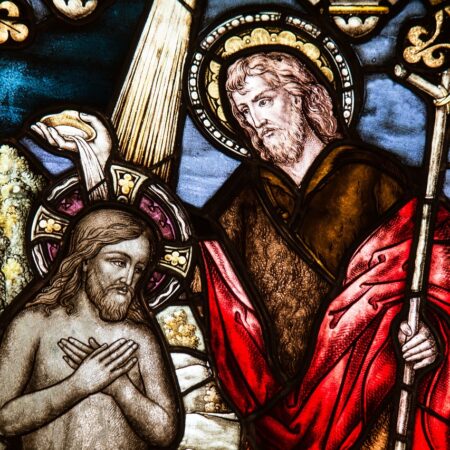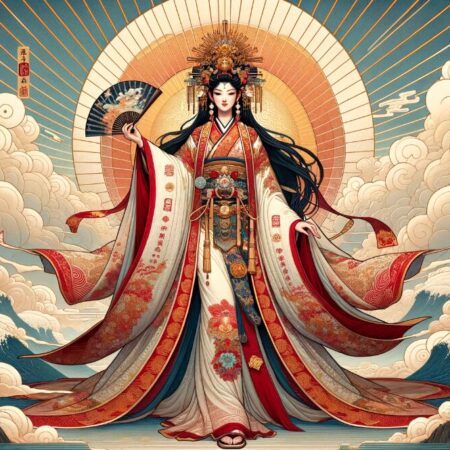Japanese people are often said to have less religious faith compared to other countries, but the influence of Shintoism is deeply ingrained in Japanese life. Shintoism involves various deities who have unfolded numerous stories since the birth of Japan.
In this article, we will briefly introduce Japanese mythology.
The Beginning of the Universe and the Three Deities
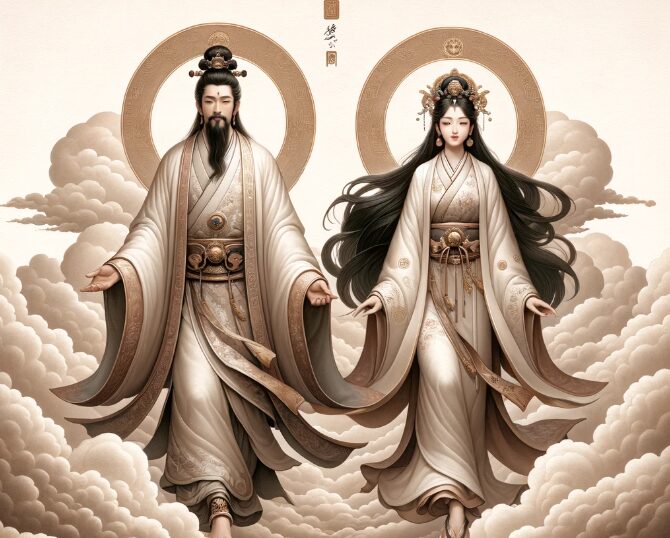
In ancient times, within the chaotic universe, the first to appear were three deities. Interestingly, in Japan, deities are often referred to by the unit "pillar." The three deities, Ame-no-Minakanushi-no-Kami, Takami-Musubi-no-Kami, and Kami-Musubi-no-Kami, resided in Takamagahara (the Plain of High Heaven) and created the world's order.
Creation of the Land and the Birth of Islands
From there, eight pairs of deities were born. The last pair, Izanagi and Izanami, meaning "He-Who-Invites" and "She-Who-Invites" respectively, were commanded by the deities of Takamagahara to descend to Earth and solidify the land.
Obeying the command, Izanagi and Izanami headed to the Heavenly Floating Bridge and stirred the sea with the Heavenly Jeweled Spear. The large droplets that fell from the spear created islands upon reaching the Earth's surface.
The first island born was Awaji Island. Following this, numerous islands and deities were born from their union.
The Progeny of Deities and the Fertility of the Japanese Archipelago
The deities born from Izanagi and Izanami shaped the Japanese archipelago and governed its natural bounty. Deities like Homusubi-no-Kami, who governed fire, and O-Watatsumi-no-Kami, who governed the sea, each possessed unique powers to nurture and protect the islands.
The Conflict between Amaterasu Omikami and Susanoo
Amaterasu Omikami, the radiant sun goddess, was the most revered deity in Takamagahara. Her brother, Susanoo, the tempestuous sea deity, often conflicted with her. One such conflict led Amaterasu Omikami to hide in the Ama-no-Iwato (Heavenly Rock Cave) in indignation at Susanoo's outrages.
The Ama-no-Iwato and the World's Darkness
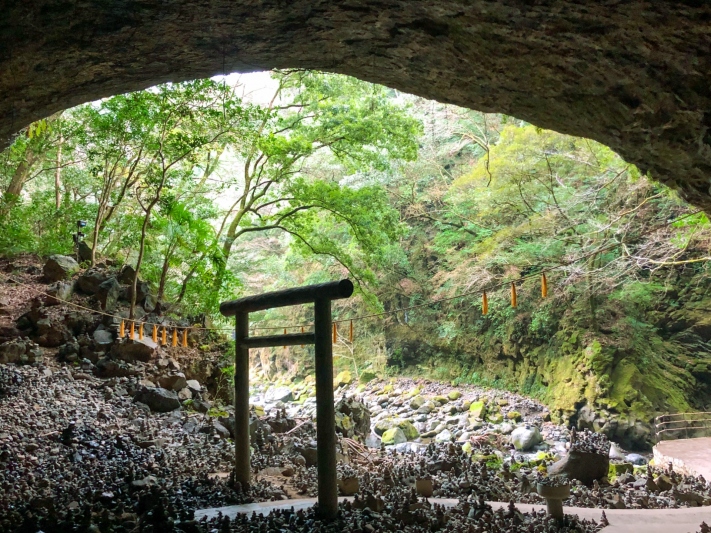
When Amaterasu Omikami secluded herself in the Ama-no-Iwato, the world was enveloped in darkness. The deities convened and sent the joyful deity Ame-no-Uzume to the cave.
Ame-no-Uzume performed a dance in front of the cave, creating a commotion among the deities. Curious about the noise, Amaterasu Omikami peeked out from the cave, and at that moment, the strong deity Tajikarao-no-Mikoto removed the heavy cave door, successfully bringing the sun goddess back out.
Thus, Amaterasu Omikami was brought out, and light was restored to the world.
(Image source:高千穂町観光協会)
The Legend of Yamata-no-Orochi and Susanoo's Bravery
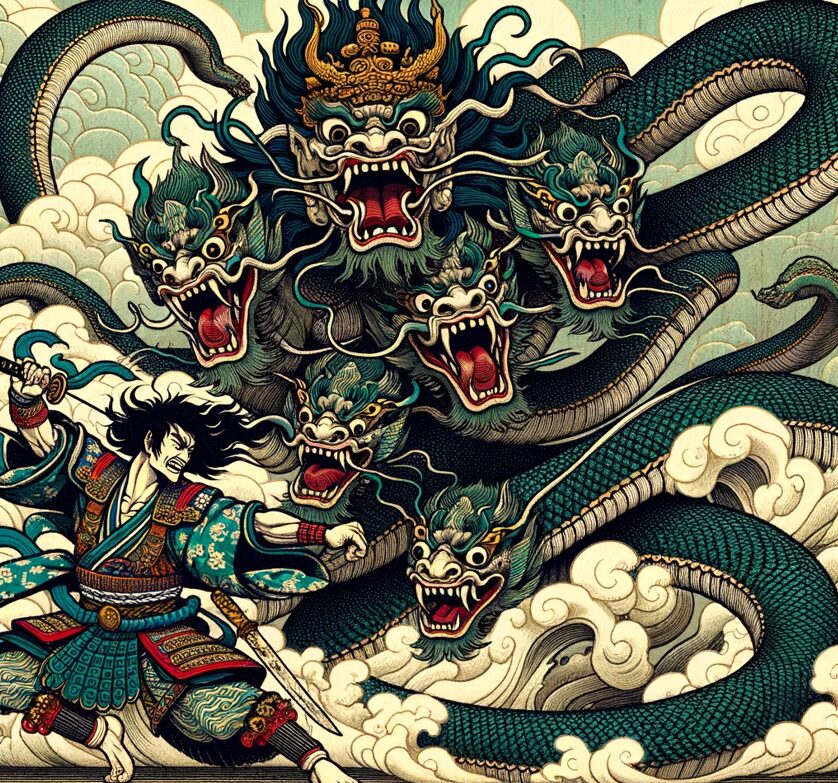
Subsequently, Susanoo, banished for his misdeeds from Takamagahara, descended to Earth. He encountered a weeping elderly couple and their daughter, lamenting the annual sacrifice of their daughters to the eight-headed and eight-tailed dragon, Yamata-no-Orochi, with the final daughter now at risk. Susanoo proposed to defeat Yamata-no-Orochi in exchange for the daughter's hand in marriage.
Susanoo disguised himself as the daughter and prepared a trap by setting up eight gates, each with potent brewed sake, around the house.
As Yamata-no-Orochi arrived, lured by the sake's fragrance, it drank from each gate and became intoxicated. Susanoo then slew the drunken dragon, and from its body, a splendid sword emerged. This sword was presented to Amaterasu Omikami and later became known as the Kusanagi-no-Tsurugi, one of the Imperial Regalia of Japan.
Thus, Susanoo, through clever strategy and bravery, vanquished Orochi and brought peace to the land of Izumo.
The Transfer of the Land and the Rule of the Deities
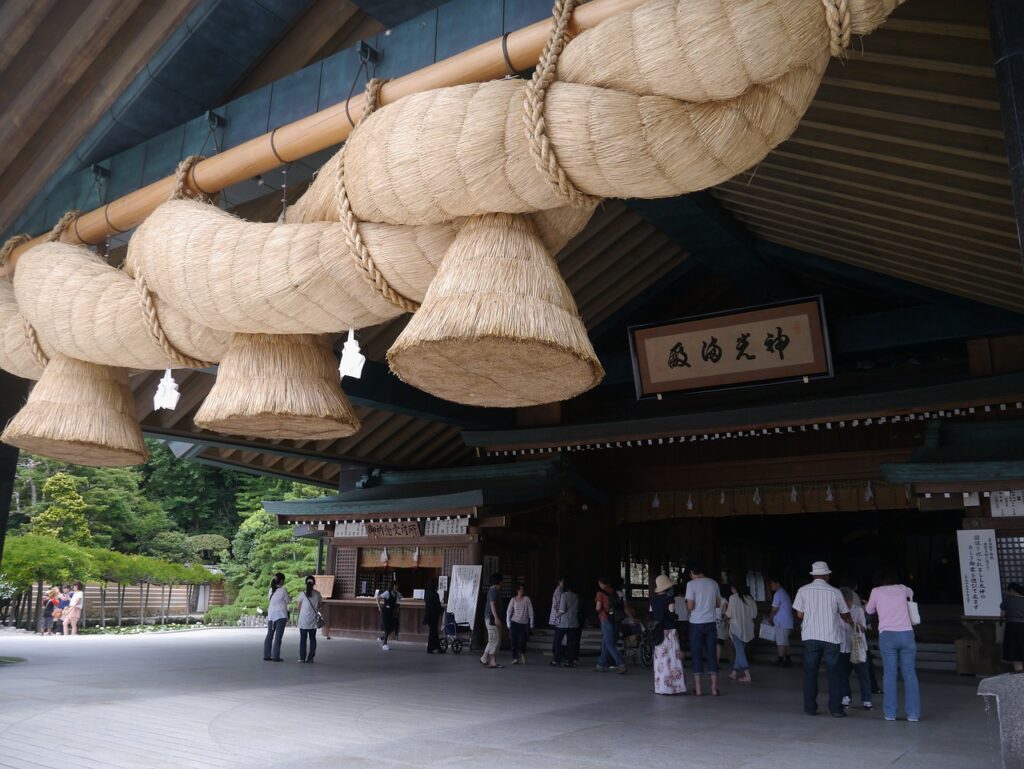
Amaterasu Omikami intended for her grandson, Ninigi-no-Mikoto, to govern the earthly realm and sent the deities Take-Mikazuchi and Ame-no-Torifune to survey the land of Izumo. The land was under the rule of Okuninushi-no-Kami. When asked if he would cede the land to the heavenly deities, Okuninushi agreed, but his son objected. A contest of strength ensued between Take-Mikazuchi and Okuninushi's son, with Take-Mikazuchi demonstrating his might by turning his arms into blades, intimidating Okuninushi's son into consenting to cede the land.
The Descent of the Heavenly Grandson and Ninigi-no-Mikoto's Mission
The grandson of the sun goddess Amaterasu, Ninigi, was commanded by the heavens to descend to the earth. He brought with him the techniques of rice cultivation and agriculture, laying the foundations for a rich life and culture among the earthly beings. The story of the heavenly grandchild's descent provides a mythological basis for the claim that the imperial family of Japan is the direct descendant of deities, highlighting the sacredness of the Japanese imperial lineage.
Summary
How was it revisiting the myths of Japan? The narrative is quite dense, I believe. Japanese mythology is detailed in the "Kojiki" and "Nihon Shoki," the oldest historical records of Japan, chronicling ancient myths, legends, and history. These documents are indispensable for understanding Japanese culture.
These myths permeate various aspects of Japanese culture, so understanding them is a valuable key to comprehending Japan's identity and traditions.
We've briefly looked back at the history of mythology this time, but I hope to introduce more in-depth content in other articles. If you're interested, I'd be delighted if you'd read those as well!



